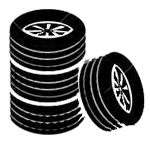What is nitrous / nitrous oxide / NOS?
Similar Questions:
What is a "jet"?
What is a "fogger"?
What is a "wet" system?
What is a "dry" system?
Nitrous is often referred to as NOS. This is not technically correct. NOS is the acronym for Nitrous Oxide Systems, a company that has done it's best to become synonymous with the use of nitrous oxide.
The distinction has become so blurred that it was lost even in the popular racing movie "The Fast and the Furious", where characters routinely referred to nitrous oxide systems as "NOS". Interestingly, some claim Nitrous Oxide Systems was a sponsor of the movie. Regardless, however convenient it may be, "NOS" is not a term, abbreviation or contraction for nitrous oxide.
Nitrous oxide is a gaseous oxidizer (N2O) which is injected into the engine intake. As with any chemical name, "nitrous oxide" is not capitalized since it is not a proper noun.
During the heat of the combustion cycle, it breaks down, releasing relatively large amounts of oxygen into the air/fuel mixture. Since nitrous is 30% oxygen, compared to normal air at 21% oxygen, more fuel burns in the cylinder, which results in more power.
Also, as the highly-pressurized N2O liquid is introduced into the intake air, it expands. This expansion requires heat, which is taken from the surrounding air. The net result is an overall drop in the temperature of the intake air charge, resulting in higher air density (more power) and cooler combustion temperatures (less knock).
A byproduct of the nitrous injection is that the timing on the car must generally be retarded to compensate for the increased burn rate of the mixture. In normal-air applications, the spark is set off before the cylinder reaches top-dead-center (TDC - the maximum height in the cylinder) because it takes time for the air/fuel mixture to ignite. Ideally, the piston reaches TDC just before the mix ignites completely, resulting in maximum power. The nitrous-enhanced mix burns faster, so the ignition must occur later or else the piston will still be moving towards TDC when the mix ignites. This can be extremely hard on an engine. The knock-sensing abilities of the DSM engine computer will help prevent this occurance.
Used by dentists as an anesthetic gas, automotive systems avoid medical industry regulation by mixing in foul-smelling sulfur gas, preventing automotive gas from being inhaled. It also makes nitrous-equipped vehicles smell bad while using the system.
The amount of nitrous is usually controlled by the size of the injectors ("jets"), which are rated according to the expected horsepower gain. Some form of electronic or manual control is also employed; on DSMs a favorite controller is a boost-sensitive switch, which automatically kicks in the nitrous delivery at the appropriate time. Nitrous can also be used directly on an intercooler to cool down the intake air - such a system is called a 'fogger', and provides more cooling but potentially less oxygen.
A "wet" nitrous system injects fuel along with the N2O gas. A "dry" system does not. "Wet" systems are harder to tune since the introduction of additional fuel is an added complication.
Nitrous systems may not generally be used except at full acceleration, over a certain RPM, and (of course) require periodic refills. Still, there is no doubt that it is an effective way of getting a lot of horsepower. 50 hp systems are common, but it is possible to get over 200 hp, provided your car can handle it. They also provide unaltered driveability and fuel economy under normal conditions, since the N2O is only supplied on demand.
Those familiar with the movie "The Fast and the Furious" and "Gone In 60 Seconds"will remember various characters pressing buttons on the steering wheel to activate their nitrous systems. This is not normally the case. Instead, nitrous systems are generally set on throttle position or boost pressure switches and activated automatically as soon as the throttle is near 100% open.
Nitrous oxide systems are sold by Nitrous Oxide Systems and many other vendors. They cost roughly $500-$1000, depending on the complexity and application.
Nitrous oxide systems are not widely used on DSMs, as there is a perception among the DSM community that nitrous systems are a form of 'cheating'; that is, no special effort or knowledge is required in order to make a car fast if you use nitrous oxide. This is not particularily true - nitrous systems are no more 'drop-in' than a side mount intercooler - but it is easy to point out that most DSM upgrades are full-time, whereas nitrous systems may only be used under particular circumstances. Also, there are no DSM-specific nitrous kits - universal kits work - and the equipment cost is relatively high.
Despite any old prejudices, nitrous systems seem to be coming back into vogue among high-end DSM racers as a legitimate method of producing raw power. Some DSMs have dyno results showing no less than 611 horsepower, 70 of which were gained through the use of a nitrous kit. Cars of this type generally have few options left to achieve big power gains.
Nitrous systems have unconventional uses as well. To the dismay of the competition, some DSMers even fitted a rental Nissan Maxima with nitrous at the 1997 Oklahoma Shootout (the NOS-Xima), showing that even a hopeless family sedan can turn decent times on the bottle. (Note this is not the same Maxima described below.). Metnal note. Never buy used rentals.
You may want to read the statement and see the pictures provided by Doyle & Victoria Schoenberger, who had a 15 lb. nitrous bottle explode in the rear of their 1991 Nissan Maxima while it was parked in their garage. They experienced significant damage to the home, as well as the total destruction of their car. The explosion was apparantly due to a triple failure - the nitrous bottle heater was wired so that it could be powered even if the ignition was off, the heater was accidentally left on, and the safety vent on the bottle failed to operate. While this can safely be classed as a freak event (or even some type of scam, as some people suggest), it is nevertheless a powerful argument - one must never become complacent when working with compressed gases. When handled properly, they are safe, but any carelessness could result in severe damage or death.
The argument that nitrous is 'cheating' often arises.. This assertion implies that there exist rules (written or unwritten) which govern how DSMs should be set up. Since there are no such rules (unless, of course, individuals get together and agree on a set for their own purposes) it is difficult to justify this position, and Digesters have long since become tired of the discussion - please resist the temptation to reopen the topic.
QA #71
Last Updated:
2016-05-30 08:57







